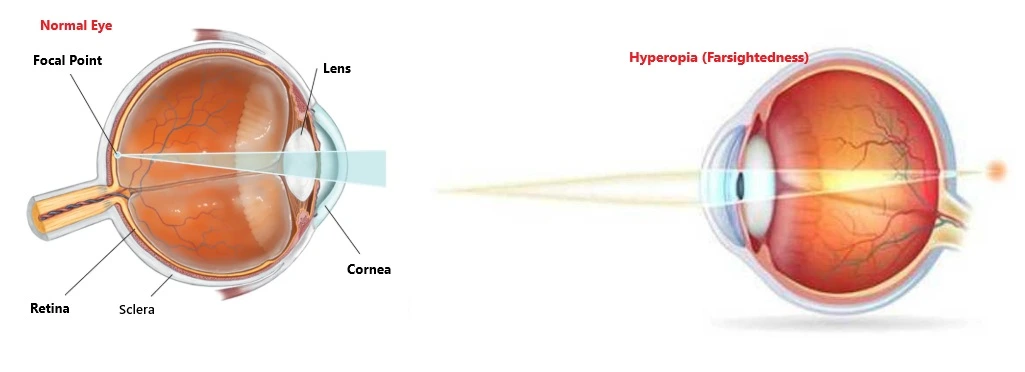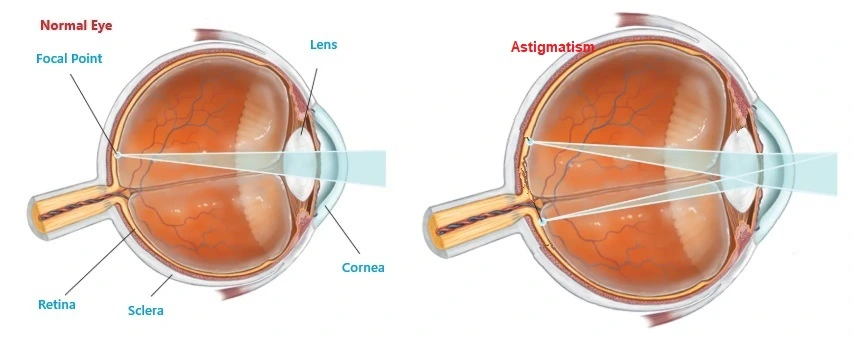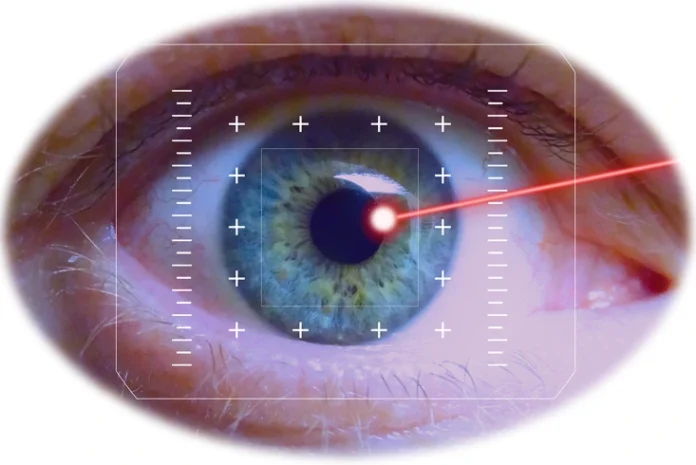LASIK eye surgery offers a life-changing solution for three kinds of refractive errors. Learn about the refractive errors: myopia, hyperopia, and astigmatism.
LASIK Introduction
Laser-Assisted In Situ Keratomileusis (LASIK), commonly known as LASIK eye surgery, is a type of eye refractive surgery performed through a femtosecond laser or a microkeratome. It treats vision problems caused by refractive errors. After the procedure, patients eliminate or reduce their need for glasses.
Nowadays, people are too concerned about how long LASIK eye surgery lasts. The surgical procedure is very short, taking 10–15 minutes per eye, and patients need no admission to the hospital. The results are incredible: 96% of people show satisfaction, and 90% successfully achieved the 20/20 vision. More than 50% gained even better vision than this (Marietta Eye Clinic, USA).
How our Eyes Work
For a better understanding of refractive errors, we must know how our eyes work:
- First, light enters the eye through the cornea, which controls the amount of light that enters and bends it toward the pupil, a black hole in the middle of the iris.
- The light then passes through the lens, which bends a second time.
- The lens focuses the light onto the retina (the light-sensitive layer of tissue at the back of the eye), which converts the light into electrical signals with the help of light-sensitive cells called rods and cones.
- The nerves of the retina collect all the electrical impulses and send them through the optic nerve to the brain, which processes them into images.
In the case of refractive error, the shape of the cornea and lens prevents light from bending properly. The eye loses clear vision because it does not focus light on the retina. In LASIK eye surgery, the ophthalmologist uses a femtosecond laser to reshape the cornea, improving how the eye focuses light onto the retina. LASIK eye surgery corrects three kinds of refractive errors (myopia, hyperopia, and astigmatism), which are discussed here:
Myopia
Myopia (nearsightedness) occurs when the eyeball is too long or the cornea is too curved. For this reason, nearby objects look clear, while farther objects appear blurred. LASIK flattens the cornea’s curve through a laser that allows light rays to focus more directly on the retina.

Hyperopia
Hyperopia (farsightedness) occurs when the eyeball axis is too short or the power of a refractive object is too weak. As a result, the eye focuses the image of a distant object behind the retina. In such conditions, near objects appear blurred, symptomatically causing headaches, eye strain, fatigue, squinting, eye rubbing, etc. Eyeglasses or contact lenses may increase the focusing power of the retina and eventually improve the hyperopia condition. However, LASIK eye surgery can help remove glasses and lenses.

In the LASIK surgical procedure, the surgeon creates a thin flap on the cornea to expose the underlying tissue. Using an excimer laser, they precisely remove corneal tissue to reshape and steepen its curvature. This allows light to focus correctly on the retina. Afterwards, the surgeon repositions the flap without stitches.
Astigmatism
Astigmatism occurs when the eye changes shape from its natural round form, like a basketball, to an uneven curvature, resembling a football. In this condition, light focuses on multiple points, which can be in front of or behind the retina, causing blurred vision at all distances.

To treat astigmatism, the LASIK surgeon uses a femtosecond laser or microkeratome to create a thin flap on the cornea and lift it gently. An excimer laser removes tissue from specific areas of the cornea. This corrects the irregular shape of the cornea by achieving a uniform curvature. The corneal flap is repositioned without stitches.

